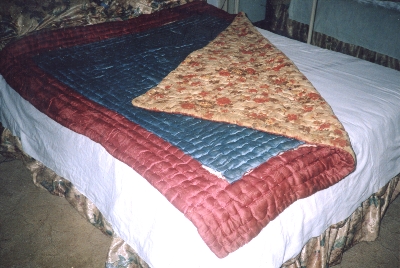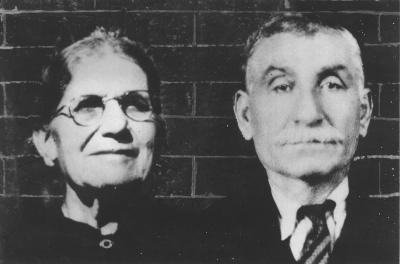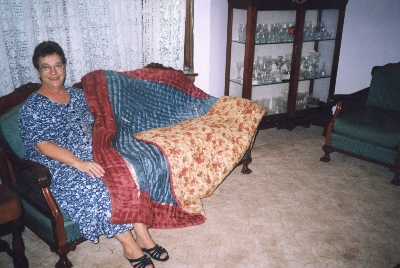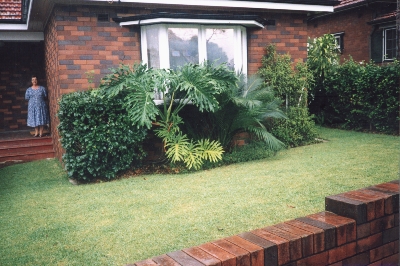Quilt No.725CK - Christina Kazaglis

1740 x 1240mm
The quilt was made in Earlwood, Sydney in 1955 by Maria (Theodorou) Kazaglis for Christina Athanasiadis her furure daughter-in-law. Christina has always owned the quilt.
Christina's Quilt
This quilt was made in the 1950s, for young Christina Athanasiadis, by her then future mother-in-law Maria Kazaglis. Maria knew that Christina's 'prika' (dowry) did not include a 'paploma' (quilt), so she bought the blue and red satin, the floral cotton fabric and raw cotton for the padding, and made the paploma, in traditional Greek style, with her sister Despina helping her, in the lounge room of her house in Earlwood. This is where Christina came to live with husband George in 1955 and are still there today.
Christina arrived in Australia at the age of 14, with her mother Irini, sister Eleni and brother George. They came from the ancient Egyptian city of Alexandria. As a young girl, Irini had been sent from her Greek island of Castellorizo to Alexandria, to work as a domestic for the local Greek bishop and his niece. In Alexandria she married Yianni who had come from Cyprus, also to find work. They decided that Australia held better prospects so Yianni came to Australia in 1938, and immediately made arrangements for the family to join him, but WW2 broke out and they had to wait until 1946 to make the journey. During these years, Christina's mother worked hard to find the money to have her children taught some basic English in preparation for coming to Australia.
When Christina and George were to be married - in keeping with the age-old customs of Castellorizo, the house in Earlwood where the quilt was made, was richly decorated with Christina's prika - beautiful embroidery, fine crochet and needlework. The women all brought traditional Greek sweets and sang the island wedding songs handed down through the generations, while the young, single women helped to make and decorate the wedding bed. For young Christina, transplanted from her beloved Alexandria into this distant, different place, it was all quite overwhelming, and she hid herself away 'in the last room of the house'! These days, Christina regrets the passing of these lovely old customs and rituals.
Christina's paploma was well-used in the early years of their marriage, especially when their three children, Maria, Irini and Vassilia (Victoria) were born. Today it serves as a reminder of the complex processes of migration and how deeply they affect the lives of hundreds of thousands of Greek and other Australian women."
[Written by Lula Saunders, adapted from interview 29 March 2000, for the National Quilt Register]



Related Quilts:
2230 x 2140mm
1940 x 1300mm
815 x 570mm
1677 x 1677mm






